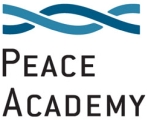Author: Hana Adamović (Zagreb, Croatia)
Introduction
It’s been argued by feminist scholars that war is gendered in its causes and consequences. The experience of war also varies according to gender, ethnical, sexual and class characteristics (Duncanson, 2016). Women often represent the vulnerable segment of the population, especially in times of conflict. Peacebuilding and humanitarian efforts addressing their welfare are necessary (Detraz, 2012). However, peacekeeping is often envisioned to be carried out by male soldiers who protect defenceless women and children. This portrayal of men masks the complexity of cases when women are active participants in the conflict.
Moreover, the majority of peace negotiators globally have been known to be men (Zelizer and Oliphant, 2013) which can be seen as a consequence of depriving women in partaking in those negotiations as well as in forming peace agreements. One of the examples may be seen in the complete exclusion of women in signing the Peace Accords in Dayton in 1995 (Thomasson, 2006). Consequences of war, which in majority affect women and girls, assume the crucial role of gendered analyses and women in peacebuilding practices (Duncanson, 2016). Gender-mainstreaming by the United Nations Security Council (UNSC) in the Resolution 1325 has been a key evolvement in raising awareness of gender issues in the peacekeeping agenda. (Detraz, 2012). It is defined as “the process of assessing the implications for women and men of any planned action, including legislation, policies or programmes in all areas and at all levels. Furthermore, it is a strategy for making women’s as well as of men’s concerns and experiences an integral dimension of the design, implementation, monitoring and evaluation of policies and programmes in all political, economic and societal spheres that allows women and men to benefit equally, hindering perpetuation of inequality with an ultimate goal of achieving gender equality.” (Zelizer and Oliphant, 2013). This essay will try to analyse different factors that contribute to the perception of the role of women in building peace and the challenges and responsibilities in those perceptions that’s commonly carried by society as a whole. The second part will address the practical development of women’s practices in the aftermath of the war in Bosnia and Herzegovina.

